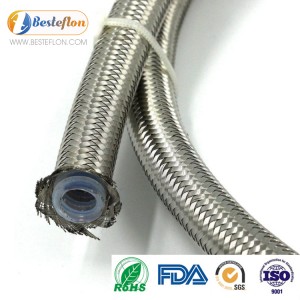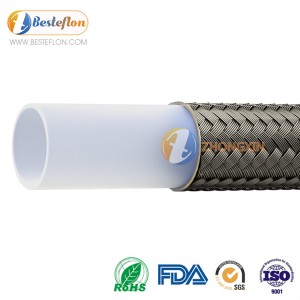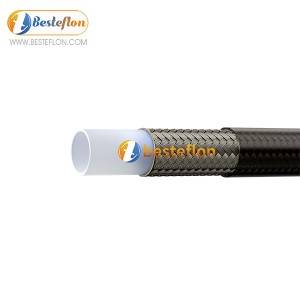Operators often set their sights on facilities, and obscure PTFE hoses often do not get the attention they deserve. Most manufacturing facilities have codes and policies regarding hoses and fittings, but routine maintenance of hoses is habitually ignored.
This trend is worrying, and it's important to take hose leaks seriously in your facility. If the PTFE hose fails, the leaked hazardous substances may cause personal injury accidents, and also lead to reduced production efficiency or even downtime, increasing operating costs. For example, the connection may be incorrect during assembly, or the hoses may not be properly connected to the application. Also, even with the correct settings and material selection, hoses will often wear down over time. Therefore, regular inspection and replacement of worn or damaged hoses can reduce downtime, save money, and ensure a safe work environment.
So how to overcome leakage is an inescapable task for each user. In response to these issues, we have the following recommendations:
1.Correctly match hose to application
When selecting the correct hose, consider several aspects to ensure the hose is properly matched to its intended application.
PTFE tubing - This is usually use 100% pure PTFE tubing , its working temperature range is -65 degrees ~ +260 degrees, this type of hose is mainly used in high temperature and low pressure facilities. Because this tubing can hardly withstand too much pressure. If the tube is bent during operation and the working temperature exceeds the standard range, the performance of the hose should be tested or replaced in time.
PTFE hose - This type of hose is made from a 100% virgin PTFE inner tube and braided with single or multiple layers of 304/316 SS steel wire braid or fiber braid. The purpose of this structure is to improve pressure control and maintain flexibility, it’s mainly used in high pressure or ultra-high pressure and high temperature facilities. When checking reinforcement, The bend radius and "bending force" of the hose should be considered. Thicker or multiple layers will increase the pressure rating of the hose, but will likely result in a stiffer, less flexible hose that will not perform well in dynamic applications.
Coating - Coating is the outermost layer (usually silicone, polyurethane, or rubber) that protects the substrate, personnel, and surrounding equipment. Make sure your covering can withstand outside interference, as this is the hose's first line of defense.
End Connections - The performance of a hose is largely dependent on the manufacturer's expertise in assembling the hose. When assembling a hose, it is imperative to follow every step of the assembly process, using professional fully automated crimping equipment to connect the correct end connections to the hose and pressure test it.
2.Proper hose routing
For hose installations in different applications, hoses of appropriate length and specifications are usually used. If the hose is too long, it will take up unnecessary space, rubbing the hose with itself or the machine, and accelerating the wear. Alternatively, the hose may be too short and too tight between two points. In this case, thermal expansion, changes in system pressure, or slight movement of the connection point can cause leakage at the termination. The proper hose length will have enough slack to accommodate movement of the connection point, but not enough to allow friction, interference or kinking. Also try not to over-bend the tube, at which point you should use a fitting at an appropriate angle.
3. Conditions for storing hoses:
1. Store the hoses in a clean and dry condition at a constant temperature, lay flat but do not stack the hoses too much and prevent UV/sunlight exposure.
2. Put caps on both ends of the hose to prevent contamination and prevent dust, debris and insects from entering the hose
Hoses are a convenient and quick way to connect two points in a fluid system, but be sure to take the necessary steps to ensure safety and avoid costly downtime. If you have any technical questions, please contact the Betseflon sales and service center, and we will provide you with professional advice.
If you are in PTFE Hose business,You May Like
Buying the right PTFE tubing is not only about choosing different specifications for different applications. More to choose a reliable manufacturer. Besteflon Fluorine plastic Industry Co., Ltd. specializes in the production of high-quality PTFE hoses and tubes for 15 years. If any questions and needs, please feel free to consult us for more professional advice.
Post time: Sep-01-2022



